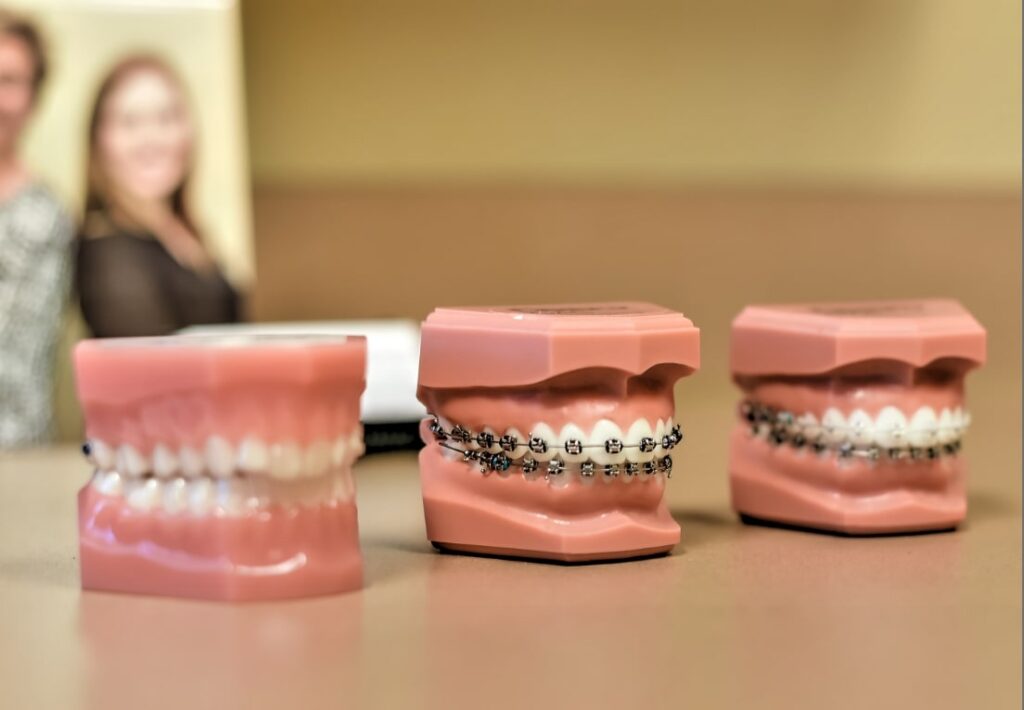How Cumming Orthodontics Addresses Common Braces and Invisalign Concerns
Wiki Article
Comprehensive Overview to Orthodontics Treatments for Remedying Dental Misalignments
Comprehending the intricacies of each procedure, including their systems, advantages, and prospective disadvantages, is essential in making educated decisions concerning one's orthodontic therapy. As we browse through the detailed guide to orthodontic procedures for correcting oral misalignments, the complex details of each technique will unfold, dropping light on the course toward a practical and unified oral placement.Orthodontic Procedures Overview

Routine modifications and tracking are crucial parts of orthodontic therapy to make certain progress is on track and to make any type of required modifications along the method. By undertaking orthodontic procedures, patients can not only accomplish a straighter smile however also improve their general dental health and feature.
Traditional Braces: Exactly How They Function
When considering orthodontic treatments for oral misalignments, conventional braces attract attention as a time-tested technique for fixing teeth positioning. Typical braces contain braces, cords, and bands that function together to apply continuous pressure on the teeth, slowly relocating them right into the wanted placement. The braces are affixed to the teeth utilizing an unique adhesive, and the cords are threaded through the brackets. By adjusting the stress of the cords, orthodontists can manage the instructions and force related to each tooth, assisting them right into correct positioning over time.
One secret facet of how standard dental braces work is the procedure of bone remodeling. As stress is applied to the teeth with the dental braces, the bone bordering the teeth is reshaped to sustain the new tooth placements. This makeover is vital for the long-term security of the fixed alignment. Clients will certainly need routine adjustments at the orthodontist's workplace to guarantee the dental braces proceed to use the proper stress for effective teeth movement.
Unseen Aligners: Benefits And Drawbacks
Unnoticeable aligners supply a practical and very discreet choice to conventional braces for remedying oral imbalances. These clear, tailor-made trays are practically unseen when worn, making them an appealing option for people looking for a much more cosmetically pleasing orthodontic treatment. One of the key benefits of undetectable aligners is their removability, permitting easier upkeep of oral health contrasted to typical dental braces. People can eliminate the aligners before consuming or cleaning their teeth, lowering the threat of food getting stuck in the home appliance and simplifying the cleansing procedure.
Surgical Orthodontic Options
Surgical interventions in orthodontics existing sensible Recommended Site choices for resolving complicated oral misalignments that may not be properly resolved via conventional orthodontic therapies. While typical dental braces and undetectable aligners can fix numerous orthodontic concerns, specific situations need surgical treatment to accomplish optimum results. Surgical orthodontic alternatives are typically recommended for extreme malocclusions, substantial jaw discrepancies, and situations where the underlying bone structure needs alteration to accomplish proper positioning.One typical medical orthodontic procedure is orthognathic surgery, which involves rearranging the jaws to fix functional issues such as trouble chewing or speaking. This surgical procedure is often executed in partnership with an orthodontist who assists straighten the teeth prior to and after the procedure. Surgical orthodontics might likewise entail treatments to subject affected teeth, eliminate excess periodontal cells, or reshape the jawbone to develop an extra unified facial account.
Before thinking about medical orthodontic alternatives, clients undertake a comprehensive assessment to identify the necessity and potential benefits of such interventions. orthodontics. While surgical procedure might appear difficult, it can considerably boost both the feature and looks of the smile in cases where standard orthodontic therapies fall short
Retainers and Post-Treatment Care

Failure to comply with post-treatment treatment directions can result in regression, where the teeth gradually relocate back in the direction of their original placements. Regular retainer wear, great dental hygiene, and routine oral exams are essential for keeping the outcomes accomplished with orthodontic surgical procedure and making sure the lasting security of the corrected oral positioning.
Final Thought
To conclude, orthodontic procedures provide various choices for fixing dental imbalances. Typical dental braces make use of steel brackets and cables to change teeth into correct positioning. Invisible aligners provide an even more very discreet choice but might not appropriate for all instances. Surgical orthodontic options are offered for much more serious misalignments. Retainers are typically made use of post-treatment to maintain the brand-new placement. In general, orthodontic procedures can successfully boost oral wellness and aesthetic look.As we browse through the extensive guide to orthodontic treatments for remedying oral misalignments, the detailed details of each technique will unfold, dropping light on the course toward a unified and practical dental alignment. - cumming visit this web-site orthodontist
One of the most common orthodontic therapies is the use of dental braces, which are composed of metal brackets and wires that use gentle stress to slowly change teeth into the preferred position.When considering orthodontic treatments for oral imbalances, standard braces stand out as a tried and true technique for dealing with teeth placing. Additionally, invisible aligners may not be appropriate for complex orthodontic concerns that require more substantial teeth movement, as they are normally suggested for mild to moderate cases. Retainers are custom-made orthodontic tools designed to hold teeth in their fixed placements after the conclusion of orthodontic therapy.
Report this wiki page